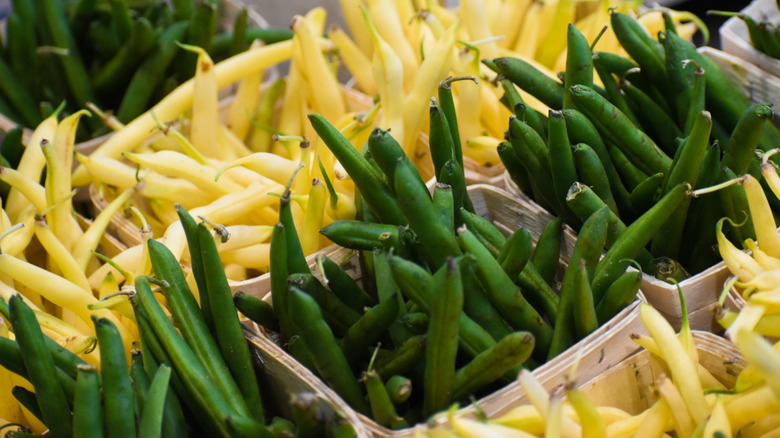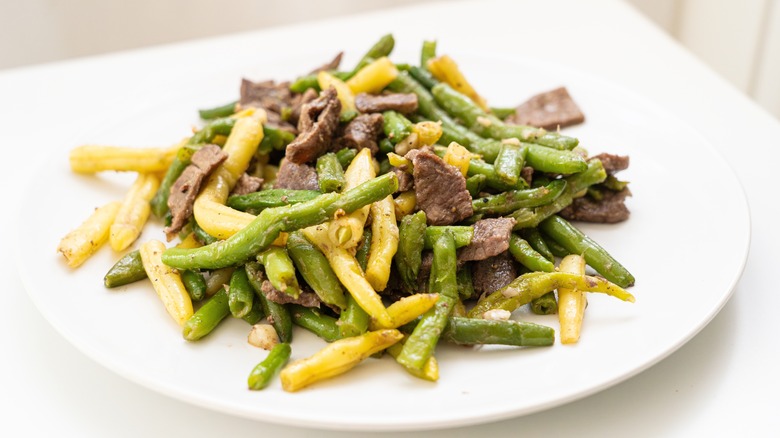Yellow Wax Beans Vs Green Beans: What's The Difference?
As an excellent source of vitamins, minerals, and fiber, legumes are a staple vegetable that comes in a variety of types. Green beans are one of the most common and may be referred to as French beans, snap beans, or string beans. While the term "green beans" is often used as an all-encompassing term for these legumes, they grow in an array of breeds, including wax beans. So, if wax beans are just a type of green beans, how are they different? The answer is all in the color.
The only difference between the common green bean and the wax bean is the amount of chlorophyll in each. This unique component is a key part of the photosynthesis process, allowing plants to absorb sunlight for energy to grow. Most importantly, the presence of chlorophyll is why plants appear green: The pigment doesn't absorb green wavelengths from white light. The numerous breeds of string beans contain various levels of chlorophyll, so they may be light to dark green in color. Wax beans, though, are pale to golden yellow because they don't contain chlorophyll.
Additionally, the chlorophyll content is why green string beans change color when they're cooked, while wax beans maintain their hue. The heat breaks down the pigment, making green beans look duller.
Wax and green beans: Similarities from ground to plate
As early as 7000 BC, green and wax beans have been harvested in the Americas, and both grow as bush and pole breeds during the warm season — typically from June to September. Because of that, you're likely to get the freshest, best-quality string beans from your local grocer or farmers' market during this period. The beans should have an even color, a thin skin, and a brittle snap when you bend them. Avoid beans that have brown spots, don't make a sound when broken, or don't break fairly easily.
Fresh wax and green beans can be stored for up to five days in the refrigerator. Just put them in a plastic bag in your produce drawer. On the other hand, you can blanch the vegetables before freezing them. Before eating and cooking, snap off the ends and rinse the beans under cool water in the sink.
Both green and wax beans have an earthy, mildly sweet flavor with a refreshing crunch when eaten raw. Then, the earthy flavor and texture soften when cooked and take on whatever seasonings you use. For instance, summer savory is a pungent spice that pairs well with string beans. Aside from experimenting with more than salt and pepper, consider using various cooking methods. Boiling green beans until tender is a common practice, but you can upgrade your green beans by adding them to a stir-fry, crisping them in the air fryer, or roasting them in the oven. Plus, combining the colors is a great way to make your green bean casserole better, giving it a vibrant flair.

